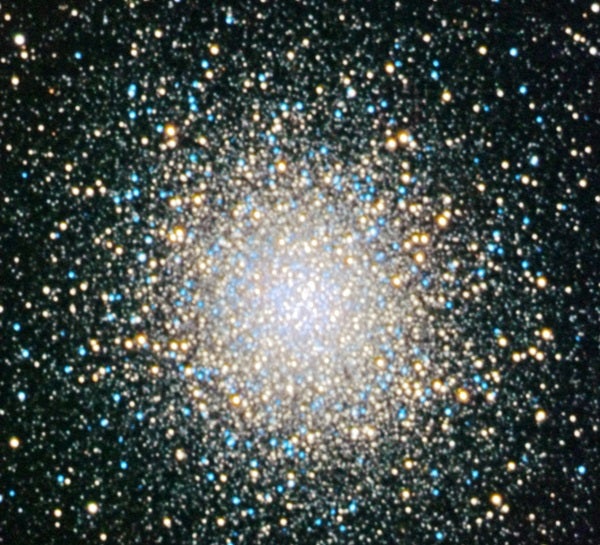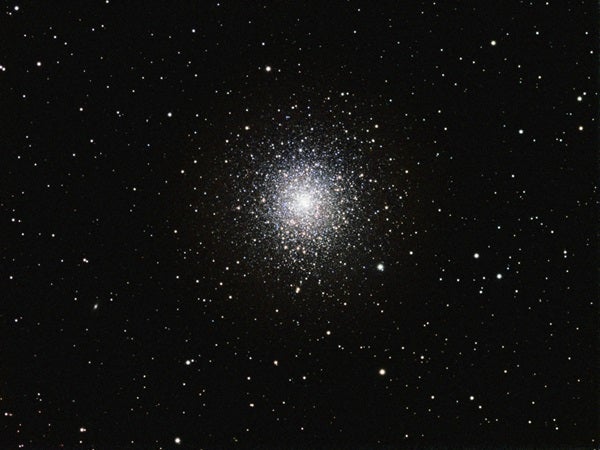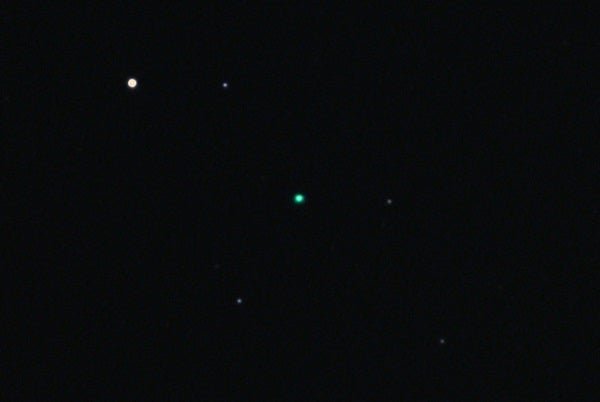Most of the targets that I’ll feature will be visible through common size binoculars. But just to mix it up a little, we will also feature at least one “challenge object” that may only be visible through 10×70 and larger models.
This first column kicks off with a survey of the sky’s legendary strongman, Hercules. While the stars in Hercules are comparatively faint, they hold some notable targets for binocular stargazers.
You may even spot it without optical aid under a dark sky. Through binoculars, M13 looks like a tuft of celestial cotton. Standing to either side are two faint “sentry stars,” as if guarding a vault of diamonds.
It’s hard to believe, but that little puff is actually a collection of some 300,000 stars. Unfortunately, they lie 25,000 light-years away and are so tightly packed that we can’t hope to resolve them through binoculars. We are in good company, because neither could Charles Messier (1730–1817) when he added it to his burgeoning catalog of counterfeit comets.
M92 shines at magnitude 6.5, roughly half a magnitude fainter than M13, and appears only half as large. But since M92 lies about the same distance from us, at 26,000 light-years, it’s fun to see just how different two globulars can appear.
Our final stop in this great constellation is at the planetary nebula NGC 6210, this month’s binocular challenge. Planetary nebulae are expanding gas clouds expelled by aging, pulsating stars. They almost always appear small when seen from Earth, which makes identifying even the brightest through binoculars a real challenge.
NGC 6210 lies 8° south of Zeta Herculis. That’s a little more than a typical binocular field of view. There are two 7th-magnitude stars nearby, one to its south and another to its southeast. Remember to look for a bluish-green star; that will be NGC 6210.
Join me next month as we delve deep into the center of our galaxy. Until then, remember my mantra: Two eyes are better than one.













